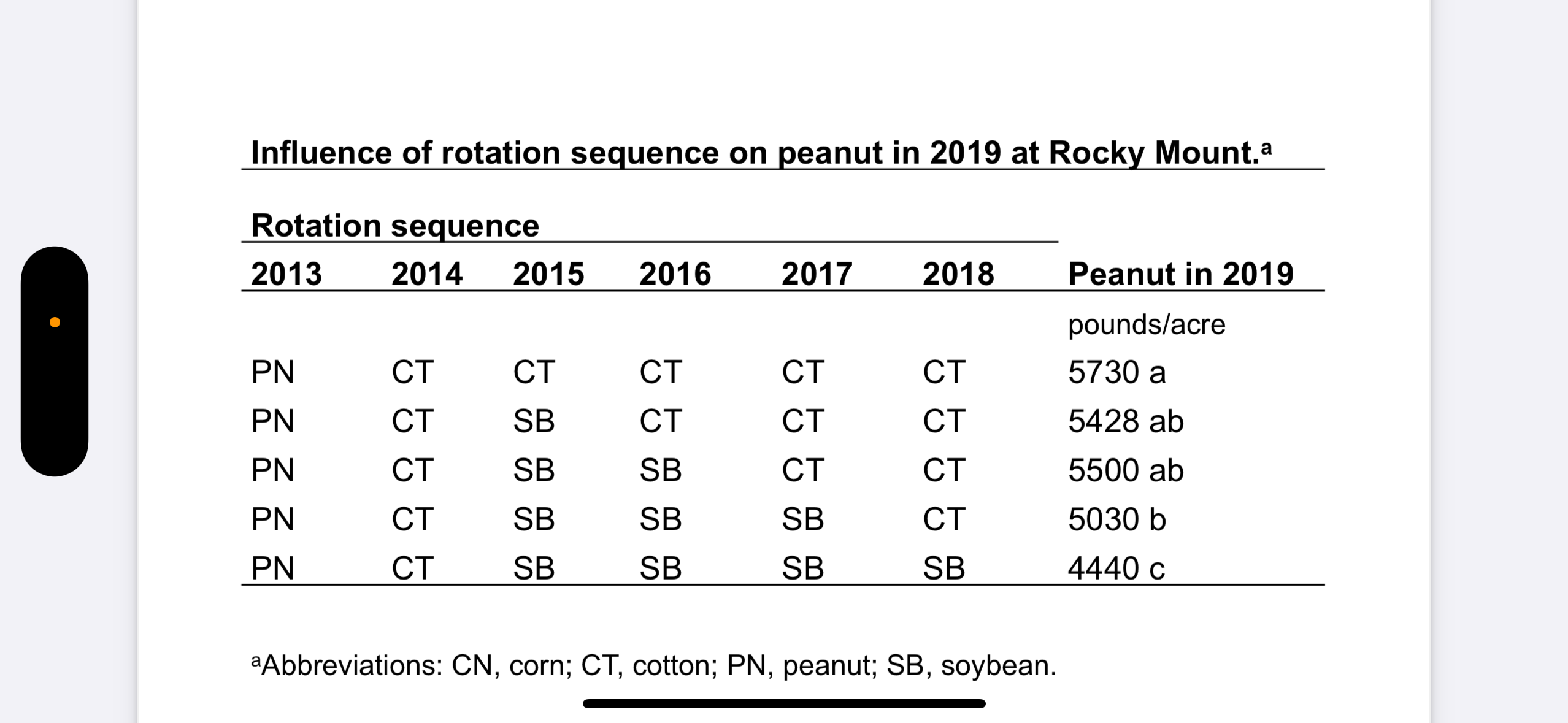Soybeans in a Peanut Rotation Peanut Notes No. 15 2025
go.ncsu.edu/readext?1052199
en Español / em Português
El inglés es el idioma de control de esta página. En la medida en que haya algún conflicto entre la traducción al inglés y la traducción, el inglés prevalece.
Al hacer clic en el enlace de traducción se activa un servicio de traducción gratuito para convertir la página al español. Al igual que con cualquier traducción por Internet, la conversión no es sensible al contexto y puede que no traduzca el texto en su significado original. NC State Extension no garantiza la exactitud del texto traducido. Por favor, tenga en cuenta que algunas aplicaciones y/o servicios pueden no funcionar como se espera cuando se traducen.
Português
Inglês é o idioma de controle desta página. Na medida que haja algum conflito entre o texto original em Inglês e a tradução, o Inglês prevalece.
Ao clicar no link de tradução, um serviço gratuito de tradução será ativado para converter a página para o Português. Como em qualquer tradução pela internet, a conversão não é sensivel ao contexto e pode não ocorrer a tradução para o significado orginal. O serviço de Extensão da Carolina do Norte (NC State Extension) não garante a exatidão do texto traduzido. Por favor, observe que algumas funções ou serviços podem não funcionar como esperado após a tradução.
English
English is the controlling language of this page. To the extent there is any conflict between the English text and the translation, English controls.
Clicking on the translation link activates a free translation service to convert the page to Spanish. As with any Internet translation, the conversion is not context-sensitive and may not translate the text to its original meaning. NC State Extension does not guarantee the accuracy of the translated text. Please note that some applications and/or services may not function as expected when translated.
Collapse ▲With commodity prices low, there will be some interest in planting a few more acres of peanuts. In some cases the additional plantings might be in fields with a less than ideal previous cropping sequence when it comes to peanuts. Use caution in fields with a significant amount of soybeans in the rotation. If you have a couple of years with corn or cotton between soybeans and peanuts, peanut yields will often be okay. There is less risk with 3 or more years, but the following slide shows the value of at least two years of cotton, even when there are multiple years of soybeans in the previous rotation. Of course, this depends on the history of disease and nematodes. The trial with the yields I am showing had some nematodes present.



